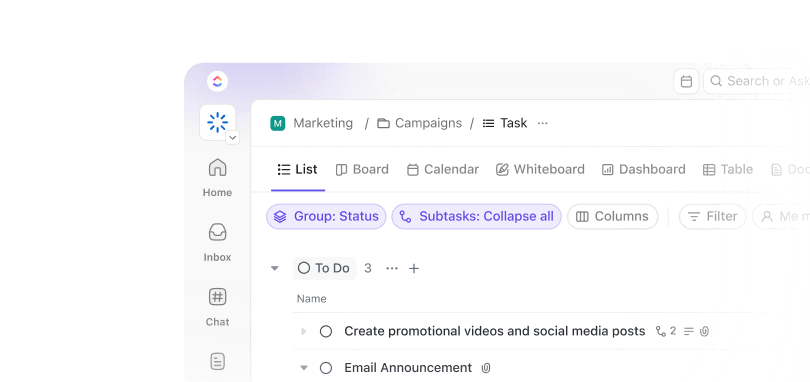Multiple studies from the early 2000s suggest that “attractive individuals” are seen as competent and trustworthy and, therefore, have a higher likelihood of landing a job. Essentially, interviewers extrapolate a single trait, like physical appearance, to professional competence.
Research also shows that applicants with tattoos are looked upon unfavorably for supervisory roles. An interviewer judges someone as unprofessional or unsuited for leadership roles based on a simple preference for getting inked.
As absurd as this may seem, most of us make snap judgments. Making big decisions based on small—often inconsequential—aspects is a form of cognitive bias. It is an error in thinking and logical reasoning, often unconscious.
In this article, we explore how two particular cognitive biases—clubbed together as the halo and horns effect—impact hiring, retention, and employee engagement. We’ll also share measures on how to counteract and overcome the halo and horn effect.
How to Avoid the Halo and Horn Effect in Hiring
Understanding the Halo and Horn Effect
The halo effect is the tendency to have a positive impression of an individual, organization, or brand based on a single trait or impression.
The horn effect is the converse of the halo effect. It is a tendency to form an unfavorable impression of someone based on one or two negative characteristics.
As you can guess, the terms find their origins in caricaturish representations of good vs. evil—a ‘bad’ devil with horns and a ‘good’ angel with a halo.
How feelings and experiences contribute to halo and horn effects
For starters, it is now widely accepted that these are both cognitive biases. The halo and horn effect typically arises from two places:
Feeling: One might ‘feel’ a certain way toward someone or something based on one characteristic. For instance, in many parts of the world, people feel that left-handedness is inauspicious or unlucky. This creates a certain bias without any basis in fact or truth.
Experience: Sometimes, snap judgments occur because of one’s personal experience. For instance, if you have a negative experience in a restaurant that serves a particular cuisine, you might end up associating that cuisine with poor quality.
These two influences are often confounded by:
Confirmation bias: You might harbor a preconceived belief that a certain ethnicity is good at math. You will then look for (and likely find) data to confirm your bias. This causes a halo effect if you’re hiring for a mathematician or programmer position at your firm.
Stereotypes: Commonly held, persistent beliefs about certain communities or even people from a certain state or region of the world become stereotypes. When you believe these stereotypes and write off entire groups of people, you’re compounding your horn effect bias.
The thin line of intention: Unconscious cognitive bias vs. intentional prejudice and microaggression
While extremely harmful, the halo and horn effects are unconscious biases. The biased person doesn’t necessarily know that they’ve made their negative or positive first impression based on unreliable data or an unfounded feeling or experience.
This is significantly different from intentional prejudice like racism, sexism, ageism, ableism, and others. When there is deliberate prejudice about an individual or group of people, it can result in consistent microaggressions, which are distinct from the (usually) benign intentions of unconscious biases.
Regardless of intention, both types of biases are extremely harmful in our workplaces and to our progress as a species.
If that seems a little complicated or abstruse, let’s look at some examples.
The Halo and Horn Effect in the Workplace: Real-Life Examples
The halo and horn effect impacts various situations throughout the employment lifecycle. Hiring is typically one of the first places you can spot it.
Hair discrimination
Over 20 states in the US have passed laws prohibiting hair-based discrimination.
As hard as it might be to digest, there have been documented cases of the horn effect causing bias against people with certain hair textures and styles, such as braids or twists, traditionally worn by African-American women.
In fact, “66% of Black women alter their hair for a job interview,” finds a recent study! It’s alarming to think that qualified candidates may have been held back from the next round of hiring because of the perceived negative effects of a certain hairstyle.
Bias against new mothers
DEI (diversity, equity, and inclusion) expert Mita Mallick recalls a situation in which her job was being advertised while she was away on maternity leave. The organization simply assumed that she wasn’t returning to work—another horn effect.
Much has been written about the biases mothers face, such as being passed up for promotions or not being offered travel opportunities simply because someone assumed they would not be available.
Generational bias
Ever been in an organization that delegated social media to the youngest person on the marketing team? Well, that is the halo effect in action. The bias here is the assumption that by virtue of being young or belonging to Gen Z, the employee must be good with social media.
Culture fit
In modern workplaces, hiring for culture fit is a big deal. Organizations want to hire people who can thrive and flourish in an established culture, with a rigid affinity to certain prized characteristics. Those could be openness, transparency, ambition, high performance, agility, etc.
Unfortunately, this idea of ‘fitting’ into a specific culture might result in companies hiring the same kind of people. This can lead to a lack of diversity that stymies innovation and growth.
For instance, while looking for culture fit, a candidate’s perceived good qualities might be an Ivy league education, or young, single, males from certain backgrounds, or candidates with whom hiring managers have worked in the past.
Hiring for culture fit, if done thoughtlessly can compound the halo and horns effect. While the right cultural fit is crucial for an organization to work as a cohesive unit, it can also become a breeding ground for unconscious biases.
To understand the practical implications of these, read about some unconscious bias examples in the hiring system or how to avoid proximity bias in the workplace.
Implications of the Halo and Horn Effect in Recruitment
In the context of recruitment, the halo and horn effect have a significant impact. They play a key role in interactions and decisions made by an applicant, employee, hiring manager, the organization, and society at large. Some implications are:
- Making the wrong hiring decisions based on bias rather than a thorough and practical assessment
- Perpetuating an environment of non-inclusiveness and bias
- Building an employer brand that is known to be biased and not equitable
- Being perceived as discriminatory
- Creating legal and compliance risks
- The inability to attract top talent
Given the weight of these negative implications, organizations need to take strong measures to counter them. Let’s see how that works.
Counteracting the Halo and Horn Effect
If someone has made a decision influenced by the halo and horn effect, they cannot know for sure because these are unconscious behaviors. A single negative trait (negative only because of the person’s skewed perception), like having tattoos, wearing your hair in braids, belonging to a certain ethnic group, etc., can change the course of someone’s life, whether that’s by failing an interview or not getting a bank loan.
For hiring hiring managers, this presents one of the biggest HR challenges of today.
Therefore, counteracting the halo and horn effect in recruitment and organizational cultures needs strategic interventions, processes, and a robust human resource management system like . Here’s how you can use to overcome the halo and horn effect.
1. Design a thoughtful recruitment process
Counteract unconscious bias by clearly defining what positive behaviors look like. Hiring managers should look to use talent management software to design their recruitment process, while keeping the possibilities of the halo and horn effect in mind. If you’re unsure where to start, consider any of the free HR templates available online.
Try the Recruiting & Hiring Template for a comprehensive, customizable, and easy-to-use toolkit for your talent sourcing process. Streamline the processing of application forms to eliminate potential biases upfront.
2. Anonymize applications
Before you evaluate applications, remove any information that might trigger the halo or horn effect, such as name, age, gender, photograph, etc. This can lead to fewer biases and greater objectivity in recruitment.
For example, anonymizing applications for research time on the Hubble Space Telescope resulted in women outperforming men.
Anonymizing applications helps with objective decision-making and a more equitable hiring process. Automate and streamline parts of this with the Hiring Selection Matrix Template.
With this beginner-friendly template, you can focus on the skills and qualifications of each applicant and conceal characteristics that may cause bias in the reviewer.
3. Create a consistent rubric for evaluation
Develop a standardized interview process with a clear scoring rubric to evaluate candidates uniformly. Scoring a candidate’s hard and soft skills can help ensure personal biases and first impressions do not sway the hiring committee.
Define parameters: List the required competencies such as problem-solving skills, technical knowledge, communication, etc. Make sure the interviewer knows what this means and how to measure it. when it comes to behavioral skills in particular, define clearly what the positive qualities are.
Be qualitative: Create space for the interviewer to explain their evaluation in addition to providing feedback. Ask questions like, “Why have you rated thus?” to make the interviewer consider the possibility of biases in their positive or negative impression.
Involve multiple interviewers: Have a panel of interviewers assess a candidate to counteract each other’s biases. This also means that each interviewer has the time and space to go past initial impressions. By having conversations with multiple people, the candidate can show various dimensions of their skills and capabilities.
Use recruitment tools to consolidate the evaluations of the interviewers. Try the Hiring Candidates Template for a streamlined and visual evaluation process. Within this template, create your own customizable rating scales, tracking boards, interactive tables, and more.
4. Provide cognitive bias training
Remember that halo and horn effects are unconscious biases. Biased people aren’t fundamentally bad, just flawed (like most of us). The right training and support can help them identify their own biases and negative traits.
Provide training for hiring managers. Educate them about cognitive biases and their impact on hiring decisions. Openly address situations of possible bias. For instance, you can organize sessions conducted by qualified experts on addressing prejudice, creating awareness about microaggressions, confronting discrimination in the workplace, even if it’s unconscious, etc.
The hiring manager plays a significant role in recruitment decisions. Training them to identify and avoid biases will have an exponential impact throughout the organization.
5. Lean into data
At every stage in the process, collect data about your hiring. Monitor this data for patterns of bias. Especially when a hiring manager has a strongly negative opinion of a candidate that is not immediately explainable, dig deeper and collect more data.
Use this data to optimize processes or expand training. Consider some employee feedback examples to understand the state of unconscious bias within your organization.
You can also explore the use of AI in recruitment. Use AI tools for candidate sourcing, resume screening, and interview scheduling without the burden of cognitive biases.
6. Go from recruitment to retention
The horn and halo effect impacts retention as much as recruitment. Unconscious biases might be responsible for preventing deserving employees from getting promotions. It could also lead to project managers not choosing people to work on projects they might have excelled at. These talented individuals may then decide to seek better opportunities elsewhere.
Counteract the halo effect in employee engagement and retention with:
- Objective performance evaluations: Create unbiased rubrics and frameworks for performance evaluation
- Upskilling: Give everyone equitable opportunities to upskill themselves and prepare for the future
- Inclusive culture: Build a culture that actively reduces biases, fosters inclusivity, and encourages a positive work environment
- Prioritizing mental health: Focus on creating a space where conversations about mental health are welcome, open, and constructive
Hire Better, Hire Smarter With
Five percent of interviewers decide on a candidate within the first minute, 25 within the first five, and nearly 60% within the first 15 minutes. In recruitment, first impressions have a disproportionate impact. A negative first impression, even if resulting from the interviewer’s bias, is difficult to change later.
Counteracting such biases and creating an equitable hiring process is the collective responsibility of the HR team, hiring managers, and leadership. Yet, we must acknowledge that identifying the halo or horn effect is not easy.
These are behaviors that are unconscious, unknown to the person being biased. Openly addressing such biases can be awkward and uncomfortable for all parties involved. The best way to tackle this is to create formidable systems designed to prevent biased decision-making.
One of the foundational systems you can leverage is . With end-to-end project management capabilities, multiple templates, forms, dashboards, and AI tools for HR, you have everything you need to create a fair and equitable hiring process.
Eliminate the halo and horn effect in your organization. Try for free today.


Everything you need to stay organized and get work done.














